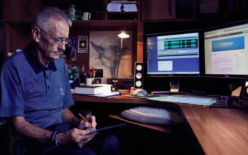I continue to be largely inactive because of a continuing family situation. Nevertheless, there are some important developments that deserve mention on this the 12th 9/11 anniversary.
Congress
Both the Commission and Joint Inquiry Staffs considered Congress to be dysfunctional in its ability to provide proper oversight of the terrorist threat to the nation. That dysfunction continues, to the point that Commission chairs Tom Kean and Lee Hamilton co-authored a serious New York Times article today, “Homeland Confusion.”
The former co-chairs of the 9/11 Commission specifically address the oversight of the Department of Homeland Security. The pair wrote:
In a cumbersome legacy of the pre-9/11 era, Congress oversees the Department of Homeland Security with a welter of overlapping committees and competing legislative proposals. The department was created in 2002 out of 22 agencies and departments. More than 100 congressional committees and subcommittees currently claim jurisdiction over it. This patchwork system of supervision results in near-paralysis and a lack of real accountability.
That “patchwork” system existed prior to 9/11 concerning oversight of the government’s counterterrorism policies and practices. Kean and Hamilton pull no punches. “That has to change.”
Syria
“Carrie Cordero, writing for the “Lawfare” blog, recently wrote an assessment, “What the 9/11 Commission Report says about Syria.”
Cordero twice quotes the Commission Report
Our enemy is twofold: al Qaeda, a stateless network of terrorist that struck us on 9/11; and a radical ideological movement in the Islamic world, inspired in part by al Qaeda, which has spawned terrorist groups and violence across the globe. The first enemy is weakened, but continues to pose a grave threat. The second enemy is gathering, and will menace Americans and American interests long after Usama Bin Ladin and his cohorts are killed or captured. Thus our strategy must match our means to two ends: dismantling the al Qaeda network and prevailing in the longer term over the ideology that gives rise to Islamist terrorism.
and,
The U.S. government must define what the message is, what it stands for. We should offer an example of moral leadership in the world, committed to treat people humanely, abide by the rule of law, and be generous and caring with our neighbors. America and Muslim friends can agree on respect for human dignity and opportunity. To Muslim parents, terrorist like Bin Ladin have nothing to offer their children but visions of violence and death. America and its friends have a crucial advantage—we can offer these parents a vision that might give their children a better future. If we heed the views of thoughtful leaders in the Arab and Muslim world, a moderate consensus can be found.
She concludes:
Government leaders, in considering whether it is appropriate to take action in Syria, and to what degree, should, this week [article written August 13, 2013] in particular, reflect on the advice and observations provided by the 9/11 Commission. I think they will find that the takeaway is, to borrow a phrase that is of the moment, don’t blink.
American Airlines Flight 77 (AA77)
Serious, important work has been done on the radar issue concerning AA 77 by Tom Lusch. Lusch has published his extensive work in a detailed article, “Radar Sort Boxes in the area of American Airlines Flight 77’s Turnaround/Disappearance,” that refines the work of the Commission staff. Two members of the Commission Staff have reviewed Lusch’s work and have found it to be an authoritative and responsible extension of our work.
Lusch has worked radar issues for many years and for at least the past four years has conducted a detailed investigation into both the work of the Commission and the disappearance of AA77. He has published a chronology of that work since 2010. It is fair to say that the false flag theorist, Paul Schreyer, played a key role in the final analysis. Schreyer conducted detailed separate email conversations with both Tom and me. Schreyer provided Lusch a link to critical information that he had not previously considered. Schreyer’s analysis is available at this link.
Correction, Sep 12, 2013. Tom Lusch advises that the key information came via a conversation with Vincent Moreau not Schreyer.
